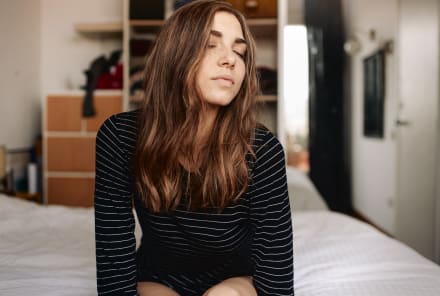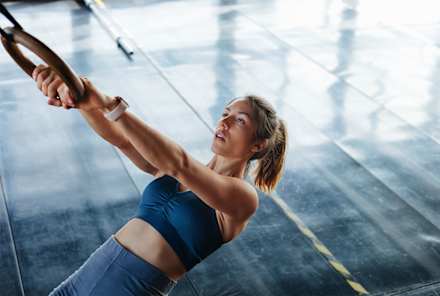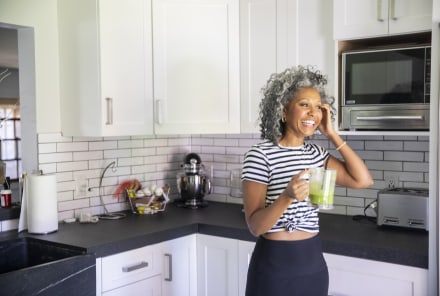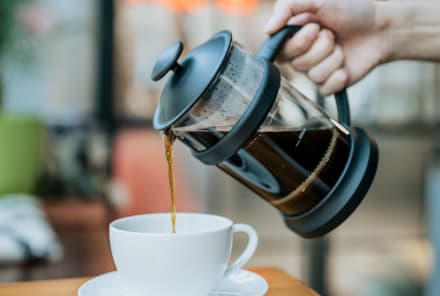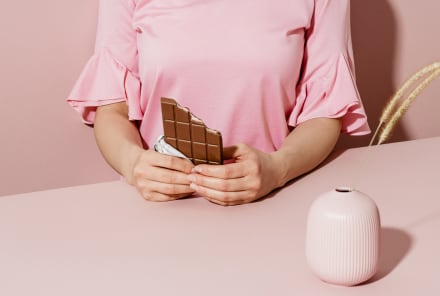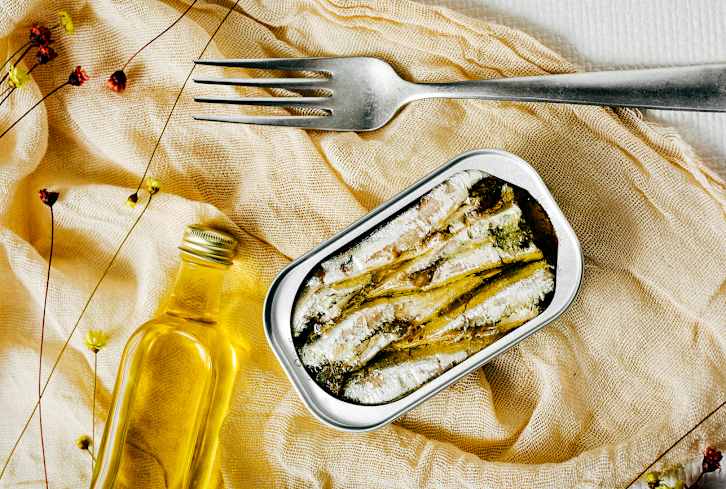Advertisement
15 Essential Oils That'll Help Balance Your Hormones


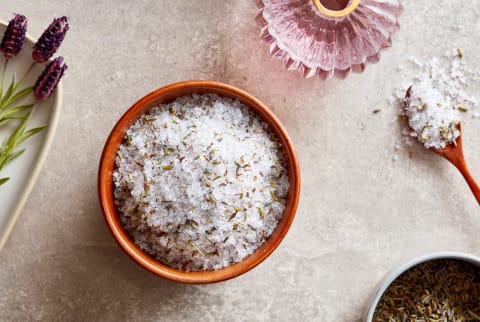
In her brand-new book, The Essential Oil Hormone Solution, Mariza Snyder, D.C., a functional wellness practitioner and essential oil buff, shares how certain oils can help balance hormones in just 14 days. Get a taste of her advice in this special excerpt.
In my time as a health care practitioner, I have researched, studied, and recommended a variety of protocols to my patients—none of which revolutionized their success like essential oils.
Before we get into what essential oils can do, let me take a minute to explain what they can't do: Even though essential oils exhibit specialized properties and are composed of hundreds of potent constituents, they are not hormones! Essential oils can't become hormones. They can't produce hormones. They can't replace hormones. But—they can help bring our body's hormone-balancing systems back into a good place, when paired with other healthy lifestyle choices.
The top 15 essential oils for hormone balance.
Basil (Ocimum basilicum)
Properties: Calming/Soothing
Safety Precautions:
- Avoid if you are epileptic, pregnant, or breastfeeding.
- May affect blood clotting, so avoid if being treated for this disorder.
Bergamot (Citrus bergamia)
Properties: Uplifting/Energizing
Safety Precautions:
- Extremely phototoxic—avoid sunlight or UV rays for at least 72 hours after topical application.
- Avoid using if taking medication that increases sensitivity to sunlight.
- May lower blood sugar levels, so use caution if diabetic.
Cedarwood (Juniperus virginiana)
Properties: Grounding/Balancing
Safety Precautions:
- Avoid using during pregnancy.
Clary Sage (Salvia sclarea)
Properties: Calming/Soothing
Safety Precautions:
• Causes uterine contractions; avoid during pregnancy, but safe to use while in labor.
Geranium (Pelargonium graveolens)
Properties: Calming/Soothing
Jasmine Absolute (Jasminum grandiflorum)
Properties: Calming/Soothing
Safety Precautions:
- May cause mild allergic reactions owing to the benzyl acetate content.
Lavender (Lavandula angustifolia)
Properties: Calming/Soothing
Lemon (Citrus limon)
Properties: Uplifting/Energizing
Safety Precautions:
- Phototoxic—dilute before topical application and avoid sunlight or UV rays for up to 12 hours after applying.
Neroli (Citrus x aurantium)
Properties: Calming/Soothing
Safety Precautions:
- Avoid if you are taking a MAOI medication for depression or another issue.
Peppermint (Mentha piperita)
Properties: Uplifting/Energizing
Safety Precautions:
- Use caution if being treated for high blood pressure.
- Use caution if taking another medication for digestive health.
- Do not use within a three-hour period if taking an iron supplement.
- Use caution if pregnant or breastfeeding, as it may reduce milk supply.
- Avoid using around children under 6 years of age due to high menthol content, which can slow breathing.
Roman Chamomile (Anthemis nobilis)
Properties: Calming/Soothing
Safety Precautions
- Avoid using if you are pregnant or breastfeeding.
Rosemary (Rosmarinus officinalis)
Properties: Renewing and Grounding/Balancing
Safety Precautions:
- Avoid while pregnant or breastfeeding.
- Use caution if being treated for epilepsy, high blood pressure, or a bleeding disorder.
Sandalwood (Hawaiian) (Santalum paniculatum)
Properties: Grounding/Balancing
Thyme (Thymus vulgaris)
Properties: Grounding/Balancing
Safety Precautions:
- Dilute with a carrier oil because of high thymol content prior to topical application.
- Avoid using if you have or are being treated for a blood-clotting disorder, as it may increase the risk of bleeding.
Ylang Ylang (Cananga odorata)
Properties: Calming/Soothing
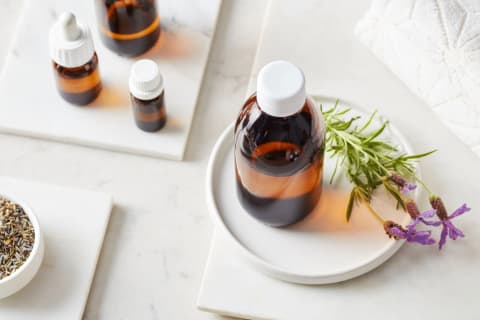
Where to apply essential oils.
Though these are the locations I suggest trying first, you should also trust your gut and experiment to find the place or places that work best for you.
Where needed: The general rule for essential oils is to apply them directly or close to where the oil is needed. For example, if you are dealing with tension in your back, you could massage diluted peppermint oil directly to the sore spot. However, if you are looking to alleviate a tension headache behind your eyes, you would never apply the oils directly to your eyes. Instead, opt for locations close to the eyes, such as on your forehead or your temples since the oils will go where they are needed once absorbed.
To the pulse points: Behind the ears, on the neck, temples, wrists, ankles, and over your heart—these are all known as pulse points, or places where you can feel your heartbeat the strongest. They allow the essential oils to be quickly absorbed into the bloodstream but are also ideal locations for aromatherapeutic benefits.
FEW Spots: FEW spots enable quick absorption through the largest pores on the body—feet, ears, and wrists. Known in Eastern medicine as the pipeline to the body, the soles of the feet have been used for centuries with reflexology to directly affect certain areas of the body. A reflexology chart will show you the corresponding areas of the body, and you can gently massage the oils where indicated for maximum benefit.
Application techniques.
Layering: Applying one oil at a time directly on top of another in a specific order is known as "layering." Apply one oil first, rub it in, wait a few seconds, and then apply the next. Repeat this process until all oils have been applied. A trick for layering is to use what is called a "driver" oil last, such as peppermint, since it will help the absorption of other oils. However, I don't necessarily recommend trying this without recommendation and guidance.
Compresses: Compresses allow the repulsion of oil and water to work to your benefit. After applying essential oils topically, add a wet, warm washcloth on top, allowing the water to push the oils in deeper. (This will enhance the aromatherapeutic benefit of the oils.) Cool-water compresses can help soothe away hot flashes or ease the discomfort of muscle aches, swelling, sprains, or bruising.
T-Shirt Tent: For aromatherapeutic benefit coupled with deep breathing, I recommend the "T-shirt tent." Place the essential oils down your décolletage, tuck your nose under your T-shirt, and practice your deep-breathing techniques. I recommend a few deep breaths in the tent, and then a few outside the tent, alternating until you feel relief. The oils will affect your bodily systems through direct absorption while allowing you to breathe in their benefits.
Baths: Add ¼ cup of Epsom salts to warm bathwater first, swirling to dissolve, and then add three to six drops of essential oils. Without the salts, the essential oils will simply float on the surface of your bath. (And it doesn’t hurt that Epsom salts are made from magnesium, which helps you go to sleep.) Do not soak for more than 20 minutes before rinsing off. Always hydrate well before and especially after your bath.
Adapted from The Essential Oils Hormone Solution © 2019 by Penguin Random House LLC. Published by Rodale Books, an imprint of Penguin Random House.



